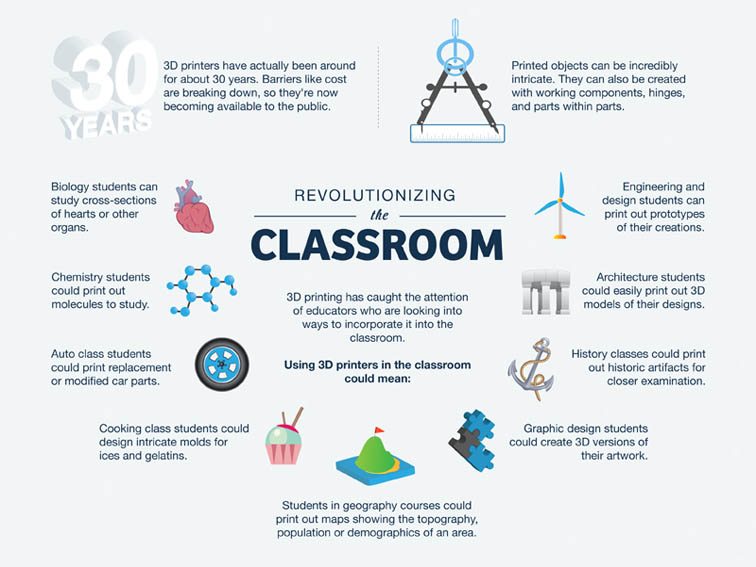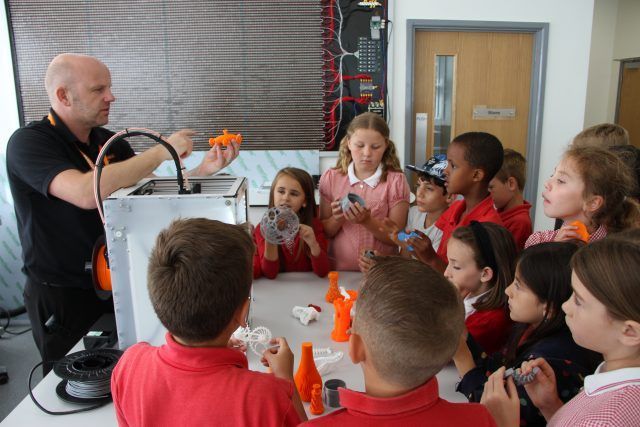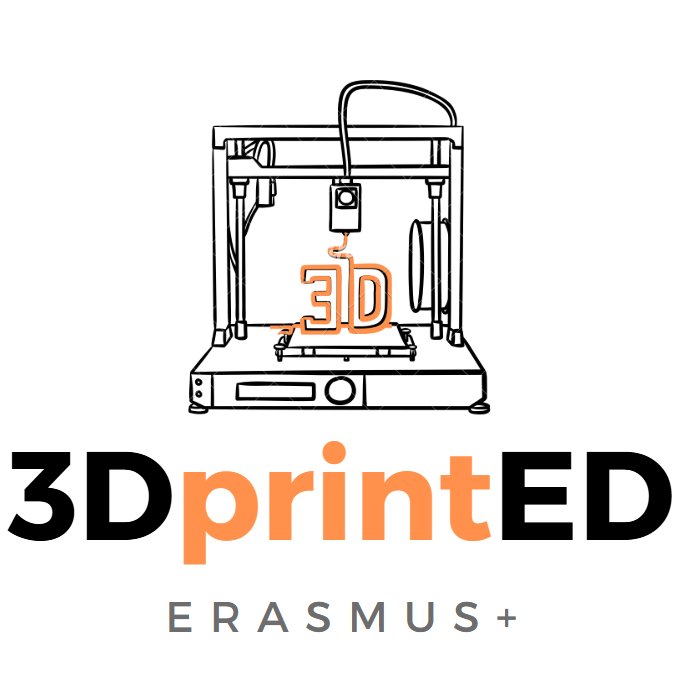WP 1

Work Package 1 (WP1) is a structured framework designed to monitor and ensure the quality, financial management, and timely execution of a project focused on integrating 3D printing into education. It establishes a system for tracking progress through periodic reports submitted every six months by each partner, documenting activities, financial allocations, and performance. These reports feed into an interim evaluation at 12 months and a final report at 24 months. The project coordinator compiles and archives these reports for review, and feedback is provided to partners to implement corrective actions where necessary. A peer review system is in place, where two representatives from each partner assess progress, share best practices, and ensure quality control. Specialized questionnaires during awareness campaigns help evaluate project impact and identify areas for improvement.
View More
Budget and time management are critical components of WP1. A financial plan and budget are developed in accordance with the Grant Agreement and Erasmus+ Programme Guide. The coordinating organization distributes payments, supervises financial management, and ensures adherence to budgetary guidelines. Each partner tracks its own expenses and submits financial reports. Time management is enforced through structured scheduling, with tasks assigned based on expertise and estimated completion times. A Gantt chart is maintained and updated monthly to track activities, sub-tasks, and milestones. To ensure deadlines are met, time buffers are included, and partners receive periodic reminders. If delays occur, support mechanisms and corrective actions are implemented.
Risk management is integrated into the project, addressing potential issues related to project execution, finances, outreach, and human resources. The selection of partners prioritizes organizations with prior European project experience while also providing opportunities for newcomers. Responsibilities are outlined before submission, and agreements are signed upon project approval. A structured conflict resolution system is in place, including direct online meetings and visits by the project coordinator. A comprehensive risk assessment is conducted at the first face-to-face project meeting, outlining major risks and mitigation strategies. In case of severe disputes, an external negotiation and conflict resolution consultant will intervene.
WP1 emphasizes inclusivity and accessibility, ensuring that activities do not discriminate based on race, gender, disability, or other factors. All physical events adhere to accessibility standards, and registration forms allow participants to request accommodations. Cultural diversity is a core consideration, influencing event design, communication materials, and outreach efforts. The project actively promotes gender equity and the inclusion of underrepresented groups in all phases of execution.
Digital tools play a crucial role in WP1, facilitating communication, collaboration, and education. Online platforms support real-time interactions, enabling partners to co-develop training materials, methodologies, and educational content. Teachers leverage digital platforms for modeling, simulation, and collaborative design, enhancing the learning experience while ensuring accessibility. This hybrid approach seamlessly integrates digital and physical elements to maximize the project’s impact.
Sustainability is embedded in WP1’s operations, with measures to reduce the environmental footprint of project activities. Partners prioritize eco-friendly travel options, including using trains instead of flights where feasible, choosing low-emission vehicles, and selecting environmentally sustainable accommodations. Meetings and events minimize paper usage, encourage digital documentation, and promote responsible use of resources. Catering services prioritize locally sourced, ethical, and energy-efficient options, with vegetarian and vegan choices encouraged.
Participation and civic engagement are actively promoted through WP1. Teachers receive specialized training, enabling them to introduce 3D printing into classrooms effectively. Students benefit from hands-on experiences, ensuring their perspectives and needs are incorporated into the project outcomes. Awareness campaigns are designed to engage educators, school administrators, and stakeholders in partner countries. These campaigns utilize interactive and visually engaging presentations to encourage feedback, improve best practices, and drive widespread adoption of 3D printing in education.
By maintaining high standards in quality monitoring, financial accountability, inclusivity, digital integration, sustainability, and civic engagement, WP1 ensures the successful execution of the project. It fosters innovation, collaboration, and long-term impact in education, aligning with broader goals of technology-driven learning and sustainable development.
WP 2

Work Package 2 (WP2) focuses on equipping STEM educators with a structured and accessible framework for integrating 3D printing into their classrooms. Its primary goal is to simplify the complexities of 3D printing technology, providing teachers with practical tools and pedagogical strategies to incorporate it effectively into their lessons. This framework breaks down technical concepts into easily understandable components, eliminating barriers for educators who may not have prior experience with the technology. It also includes lesson plans, project ideas, and assessment methods that align with curriculum standards, ensuring that 3D printing is used as an engaging and effective teaching tool rather than an additional challenge. By designing a scalable and adaptable framework, WP2 makes 3D printing integration feasible across different educational settings, regardless of available resources or technological expertise.
View More
The main results of WP2 include the development of a structured three-module methodological framework tailored to the needs of educators. These modules cover fundamental 3D printing concepts, practical modeling and slicing techniques, and subject-specific applications that allow teachers to apply the technology in diverse learning environments. The project also produces engaging educational content, including instructional videos, time-lapse demonstrations, voiceovers, and practical classroom implementation guides. Professional development workshops will be organized to ensure that teachers become proficient users of 3D printing technology, enabling them to confidently introduce it into their curricula. The overarching goal of WP2 is to empower educators with the necessary knowledge and skills, fostering interactive and innovative learning experiences for students.
To measure the effectiveness of WP2, both qualitative and quantitative key performance indicators (KPIs) are utilized. Quantitative indicators include the creation of three structured learning modules, ten real-world case studies, and five instructional video tutorials covering critical topics such as printer mechanisms, filament types, slicing software, modeling techniques, and post-processing methods. Peer review participation involves two representatives from each partner organization, ensuring thorough evaluation through at least eight peer reviews. Qualitative indicators assess the depth and relevance of peer review feedback, as well as user satisfaction from piloting activities. Data collection through questionnaires, evaluation forms, and feedback sessions is conducted by EUDA, ensuring a comprehensive assessment and continuous improvement of the framework.
Each partner organization plays a key role in WP2 based on their expertise. EUDA is responsible for developing the core content of the 3D PrintED methodology, which is divided into three modules covering the potential of 3D printing, hands-on modeling and slicing techniques, and subject-specific applications. Escola Secundária de Lagoa (ESL) leads the peer review process, ensuring content quality and overseeing the translation of materials into national languages for broader accessibility. Základní škola is responsible for refining and finalizing the methodology based on insights gained from practical implementation and classroom testing, ensuring its relevance and effectiveness. This collaborative structure leverages the strengths of each partner to maximize the impact of WP2.
By simplifying 3D printing concepts, aligning activities with pedagogical objectives, and ensuring accessibility through structured training and educational content, WP2 supports educators in seamlessly integrating this technology into their teaching. It enables teachers to create hands-on, interactive learning experiences that enhance student engagement and understanding in STEM subjects. Through this initiative, WP2 contributes significantly to the broader goal of modernizing STEM education by making innovative technologies more accessible and effective for both teachers and students.
WP 3

Work Package 3 (WP3) is designed to enhance the ability of STEM teachers to effectively integrate 3D printing technology into their classrooms by providing structured training, practical experience, and collaborative learning opportunities. The primary objective is to bridge the gap between theoretical knowledge and real-world application by developing comprehensive workshop guidelines, organizing hands-on training sessions, and fostering collaboration between trainers and educators. By equipping teachers with the necessary skills, WP3 ensures that 3D printing is seamlessly incorporated into STEM curricula, improving student engagement and learning outcomes.
View More
The main results expected from WP3 include the creation of structured guidelines that serve as a blueprint for organizing high-quality training workshops. These guidelines will cover every aspect of workshop planning, execution, and evaluation, ensuring consistency across different educational settings. A series of hands-on workshops will be conducted, where teachers, under the guidance of project partners, will actively work with 3D printers. These sessions will enable teachers to gain confidence in handling the technology while co-developing integration strategies tailored to their specific subjects and classroom needs. WP3 also aims to improve teacher proficiency, increase confidence in using 3D printing tools, and establish a continuous feedback mechanism to refine and optimize workshop content. Additionally, a comprehensive resource pack will be compiled to facilitate the widespread dissemination of training materials, ensuring that educators beyond the initial participants can also benefit from the project’s outcomes.
To measure the effectiveness of WP3, both quantitative and qualitative key performance indicators (KPIs) will be employed. Quantitative indicators include the number of structured workshop guidelines developed, the total number of workshops conducted, and the participation rate of teachers and trainers, with a target of engaging ten teachers and one trainer per partner school. The number of 3D printers tested will also be tracked, aiming for one printer per pair of participants, totaling five printers per partner country. Qualitative indicators will focus on assessing the feedback provided on the usefulness and applicability of the educational materials, as well as evaluating workshop effectiveness and scalability. Data collection through evaluation forms, feedback sessions, and structured assessments will be conducted by EUDA to ensure continuous improvement and alignment with educator needs.
The responsibilities within WP3 are distributed among partner organizations according to their expertise. EUDA leads the development of structured workshop guidelines, ensuring that they provide a comprehensive framework for effective training implementation. Escola Secundária de Lagoa (ESL) is responsible for organizing and coordinating practical workshops in each partner country, facilitating hands-on teacher engagement and the collaborative development of 3D printing integration strategies. Each partner school is responsible for recruiting teacher participants on a voluntary basis. Additionally, EUDA is tasked with producing a final evaluative report, which will assess the success of the workshop implementation, identify areas for improvement, and provide recommendations for future developments. This structured distribution of tasks ensures that WP3 is executed efficiently and achieves its intended objectives.
By offering structured training, hands-on workshops, and a collaborative learning environment, WP3 plays a critical role in enabling STEM educators to effectively implement 3D printing technology in their classrooms. The focus on feedback, continuous refinement, and broad dissemination of training materials ensures that the project’s impact extends beyond the initial participants, fostering long-term advancements in STEM education. Through WP3, educators will be better prepared to utilize 3D printing as a tool for interactive and innovative learning, ultimately benefiting students by enhancing their engagement, creativity, and technical skills.
WP 4

Work Package 4 (WP4) focuses on testing and validating the 3DPrintED methodology in real classroom settings to assess its effectiveness, suitability for students, and potential for broader application. The primary goal is to ensure that the methodology is practical, engaging, and pedagogically sound, providing STEM students with hands-on learning experiences using 3D printing technology. By conducting pilot tests in partner schools, WP4 evaluates how well the methodology enhances STEM education, fosters active student engagement, and facilitates the understanding of complex concepts. Additionally, WP4 aims to assess whether the methodology meets students’ learning needs, ensuring that the instructional materials and activities are accessible, interactive, and aligned with STEM curricula. Another key objective is to determine the methodology’s transferability to different age groups, educational levels, and subject areas, ensuring its broader applicability in various educational settings.
View More
The main results of WP4 include the validation of the 3DPrintED methodology through direct classroom trials, providing empirical evidence of its impact on student engagement and learning outcomes. The pilot testing phase will generate insights into how effectively the methodology fosters creativity, problem-solving skills, and deeper comprehension of STEM subjects. The collection of feedback from both teachers and students will be essential in refining and improving the methodology, identifying both strengths and areas for enhancement. WP4 will also assess the methodology’s adaptability for other student groups and educational contexts, determining any necessary adjustments for widespread implementation. A comprehensive evaluative report will summarize the findings, highlighting the methodology’s effectiveness, areas for refinement, and its broader applicability. Based on this evaluation, WP4 will propose targeted improvements to enhance the methodology’s impact and ensure its continued relevance in STEM education.
To measure the effectiveness of WP4, both quantitative and qualitative key performance indicators (KPIs) will be used. Quantitative indicators include tracking the number of participants involved in the pilot tests, with a goal of engaging ten teachers and one hundred students per partner organization. The number and quality of student-led 3D printing projects will also be analyzed to assess how well students apply their knowledge through hands-on activities. Qualitative indicators focus on gathering detailed feedback from teachers and students regarding their experiences with the methodology, its impact on their interest in STEM subjects, and its perceived educational value. An additional evaluation will assess the methodology’s overall effectiveness, feasibility for future applications, and scalability for broader implementation. EUDA is responsible for implementing a structured monitoring and quality assurance framework, utilizing questionnaires, feedback sessions, and assessment tools to ensure a thorough evaluation that captures both quantitative and qualitative insights.
Partner organizations share specific responsibilities within WP4 based on their expertise. Liceo Scientifico Statale F. Vercelli leads the pilot testing process, coordinating the implementation of the methodology in classrooms and ensuring a standardized evaluation process across partner schools. Each partner school is responsible for recruiting participating teachers and students and overseeing the methodology’s practical application in their respective educational environments. EUDA leads the development of the final evaluative report, compiling feedback from participants, analyzing the methodology’s effectiveness, and identifying areas for improvement. This collaborative structure ensures that WP4 benefits from diverse perspectives, leading to a well-rounded assessment and continuous refinement of the 3DPrintED methodology.
By conducting rigorous testing and refinement, WP4 ensures that 3D printing becomes an effective and scalable teaching tool in STEM education. The findings from this phase will guide future improvements, making the methodology more adaptable and impactful across different educational settings. Through structured evaluation and continuous development, WP4 contributes to the broader goal of enhancing STEM education by providing students with engaging, hands-on learning experiences that inspire creativity, critical thinking, and a deeper understanding of scientific and technical concepts.
WP 5

Work Package 5 (WP5) is dedicated to the dissemination, communication, and long-term utilization of the project’s outcomes, ensuring that its impact extends beyond the initial participants. The primary objective is to promote awareness and adoption of 3D printing in STEM education by effectively sharing the project’s findings, methodologies, and results with educators, policymakers, and other stakeholders. WP5 employs a strategic communication approach to highlight the benefits of integrating 3D printing into the classroom, engaging a broad audience through publications, digital campaigns, and in-person events. By fostering interest and support, WP5 creates an environment that encourages the sustainable adoption of the 3DPrintED methodology across different educational settings. Additionally, WP5 actively ensures that the developed resources and methodologies are implemented by equipping teachers with the necessary training and tools to integrate 3D printing into their curricula effectively.
View More
The main results of WP5 include the development of a strategic dissemination plan that outlines targeted communication strategies to ensure maximum outreach and visibility. This plan serves as a framework for sharing the project’s insights with key stakeholders, including educators, policymakers, and the broader educational community. WP5 significantly increases awareness of 3D printing’s role in STEM education through various dissemination activities, such as academic publications, conference presentations, and online campaigns. Additionally, local multiplier events and workshops directly engage schools, teachers, and parents, fostering a deeper understanding of the practical applications and benefits of 3D printing in education. By providing accessible training and educational materials, WP5 ensures that teachers are well-equipped to implement the 3DPrintED methodology in their classrooms, promoting widespread adoption and sustainable integration. Moreover, WP5 documents the project’s impact on STEM education, showcasing improvements in teaching practices, student engagement, and learning outcomes to inspire further innovation and research.
To evaluate the success of WP5, a combination of quantitative and qualitative key performance indicators (KPIs) is used. Quantitative indicators include tracking the number of content pieces produced and distributed, such as articles, press releases, and social media updates, with a minimum target of four per month. Additionally, audience engagement is measured through the reach of distributed content, social media interactions, and media mentions, assessing the project’s visibility and influence. Another key indicator is the number of participants at local multiplier events, targeting 30 attendees per country, with a total of 90 participants across all partner organizations. Qualitative indicators assess the quality and relevance of the content, the effectiveness of various communication platforms, and feedback from educators and stakeholders regarding the impact and usefulness of the shared information. Participant satisfaction at dissemination events is also measured to evaluate their perception of the project’s value and effectiveness. EUDA is responsible for implementing a structured monitoring and quality assurance system, collecting data through questionnaires, feedback sessions, and evaluation forms to ensure a comprehensive assessment of both measurable outcomes and qualitative insights.
The responsibilities within WP5 are distributed among project partners to ensure a well-coordinated and effective dissemination strategy. EUDA leads the development of the strategic dissemination plan, providing a unified approach for all partners to follow and ensuring consistency in communication efforts. Dissemination activities take place at local, national, and transnational levels, with EUDA overseeing overall coordination while each partner contributes by creating and sharing content through their respective websites and social media platforms. This collaborative effort ensures continuous engagement with stakeholders and maximizes the project’s reach. Each partner school is responsible for organizing local multiplier events to present the project’s findings and directly interact with teachers, parents, and key stakeholders. These events are customized to address local needs, providing opportunities to exchange best practices, share experiences, and gather valuable feedback for further refinement. EUDA also supports Základní škola in organizing and inviting participants to the event in the Czech Republic.
By strategically disseminating the project’s achievements and engaging key stakeholders, WP5 plays a critical role in ensuring the long-term sustainability and impact of the 3DPrintED initiative. Through targeted communication, active engagement, and accessible training opportunities, WP5 fosters the widespread adoption of 3D printing in STEM education. This ensures that the project’s results continue to benefit schools, teachers, and students beyond its initial implementation, driving forward the integration of innovative educational practices and enhancing STEM learning experiences for future generations.
“Knowing is not enough; we must apply. Willing is not enough; we must do.”
Johann Wolfgang von Goethe
German writer, poet, playwright, thinker and statesman
